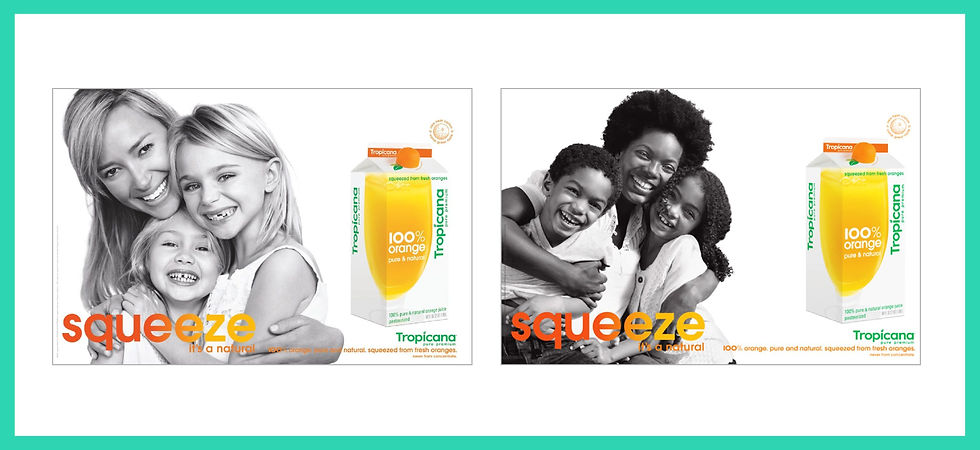When rebrands go wrong: common mistakes and lessons to learn
- Rosie Berrecloth
- Feb 18, 2024
- 4 min read
Updated: Oct 3, 2024

Reasons for rebrands going wrong
The rebranding process is frequently misconstrued as a one-size-fits-all solution to all branding issues, but it's essential to recognise that rebranding is a strategic undertaking. Hence, careful preparation and thoughtful execution is crucial.
At Threerooms, we provide strategic advice and ambitious design to help brands stand out and thrive.
In this blog, we talk about why rebrands go wrong, how you can avoid it, and classic examples of rebrand failures.
So what are the common reasons rebrands can go wrong?
Rushing into a rebrand without a thorough understanding of the underlying issues so there's no clear objective
Little understanding of the company's core values which can lead to disconnect and confusion
Inadequate communication with stakeholders, both internal and external, can hinder the acceptance and success of the rebrand
The key to a successful rebrand lies in a comprehensive assessment of the brand's current state, strategic alignment with business objectives, and transparent communication throughout the process. And of course, an experienced branding agency!
At Threerooms, we understand that rebranding is complex, demanding, expensive and risky. So our refined branding process ensures ensures brand managers and marketers are fully prepped to see it through from the start, rooted in strategy and research to achieve the business objectives.
What do I need to prepare for a rebrand?
Throughout our journey, we've collaborated with so many different businesses, each grappling with their own unique brand and communication challenges. However, the fundamental groundwork remains the same:
Clearly define the problem that prompts the need for change - the purpose
Establish a goal to guide the rebranding process
Define a brand strategy to align with business goals and values
Stakeholder research
An effective communication plan for execution
This strategic process paves the way for a successful and resonant rebrand.
When rebrands go wrong
Exploring the core reasons behind the failure of a rebrand has been interesting. There are a number of reasons, from the removal of a company's visual legacy (and perhaps brand equity) to unsuccessfully getting stakeholders on board with the change.
Tropicana - 2009

A prime example of a rebrand gone wrong is the collaboration between the renowned juice brand Tropicana and agency Arnell, in 2009.
Tropicana wanted to modernise its image to align with contemporary trends and (so they thought) expectations. So that's what they did, they revamped their brand, along with a huge packaging transformation. Following this, they allocated $35 million to advertising campaigns promoting the new design, and subsequently encountered a 20% sales decline within the initial two months.
While taste is subjective, there were fundamental flaws that contributed to the rebrand failure.

Firstly, the easily visible logo in the original version was slimmed down and repositioned vertically in the new design - abandoning its iconic orange and straw. Secondly, the prominent 'NO PULP' USP message, communicating the product's uniqueness, had disappeared.
A third mistake was designing the packaging to showcase a glass of juice on both the front and side. Although visually appealing at a 45-degree angle in graphics, the oversight was that juices are typically displayed side by side on shelves, limiting consumer visibility to the front.
The most significant error was opting for an overarching transformation rather than a subtle facelift of the packaging. The drastic changes in logo, image, typography, and tagline likely triggered consumer scepticism, raising questions about whether it was the same product they previously knew and purchased.

Read more: Nationwide rebrand: a long-overdue refresh
What were the key mistakes and what can we learn?
Unnecessary rebrand - there was no real need for change or purpose
Ignorance of consumers' emotional connection to the product, leading to disconnect and confusion - stakeholder research would have revealed customer sentiment
A full rebrand wasn't needed - a brand evolution would have been more appropriate here, retaining the familiarity of the visual identity
Failure to adapt the product to retail shelf dynamics, ultimately compromising the point-of-sale - a thought-out execution would have revealed this challenge and they'd have adapted to suit
Suffice to say, Tropicana's redesign is widely considered one of the most disastrous rebrands in history.
In the end, it's about about rigour and clarity in what you’re looking to achieve and consistently upholding accountability. It's easy to become sidetracked by external influences and unintentionally engage in an echo chamber of agreement. Prioritising the objectives, understanding the audience, and considering the context, all while maintaining a candid approach, proves to be highly effective in navigating the complexities of the project and ensuring its success.
At Threerooms, we can do all this for you - we provide strategic advice and ambitious design to help brands stand out and thrive. Want to chat through how we can help? Get in touch today.
An extension of your team
Threerooms, a multi-award-winning branding agency, has dedicated over 20 years to optimising brands and driving business success. Whether crafting new brands or refining established ones, our team is committed to delivering brand transformation tailored to help you reach your goals.



